Fujifilm S5 Pro Review
Fujifilm S5 Pro
The wedding photographer's favourite is back, with a whole new body
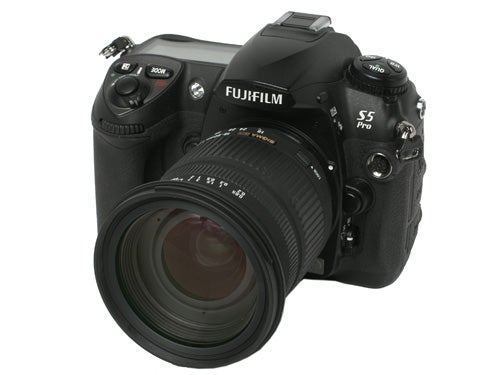
Verdict
Key Specifications
- Review Price: £979.00
After much rumour and speculation, Fujifilm announced the development of the S5 Pro digital SLR back in September last year, and finally launched in February 2007. It replaces the three-year-old S3 Pro in Fuji’s line-up, so why it’s not called the S4 Pro is anyone’s guess. Is the number 4 considered unlucky in Japan or something?

Whatever the reason, the S5 Pro is here at last. Like the S3 Pro it’s a high-end camera aimed at professional portrait and wedding photographers, and at around £980 body only it is priced to match. Compared with the body-only prices for the Nikon D200 (£814), Canon EOS 30D (£700), Pentax K10D (£630) or Sony Alpha A100 (£379) it is an expensive camera.
Unlike other current digital SLRs, in fact unlike most other digital cameras in general, in developing the S5 Pro Fujifilm has forgone the boost in megapixels that normally accompanies a model upgrade and concentrated instead on other factors to improve picture quality, such as colour rendition, dynamic range and smoother tonal gradation. This makes it a difficult camera to review, because in many ways it simply isn’t like most other digital SLRs.
There is one exception however, because the S5 Pro bears a very striking resemblance to at least one other DSLR, namely the Nikon D200, which I reviewed here in June last year. Like previous Fuji DSLRs, the S5 Pro is housed in a Nikon body and uses the popular Nikon F lens mount. Both the S2 Pro and the S3 Pro were based on the Nikon F80 film camera, and were notoriously large and heavy. Being based on the D200 the S5 Pro is smaller and lighter than the S3 (although it’s actually a little heavier than the S2), but is still no sylph. It is 147mm wide, 113mm high and 74mm deep, and weighs a hefty 830g, exactly the same dimensions and mass as its Nikon counterpart. Like the D200 it also features a robust magnesium alloy body with dust and moisture seals around the controls and hatches.
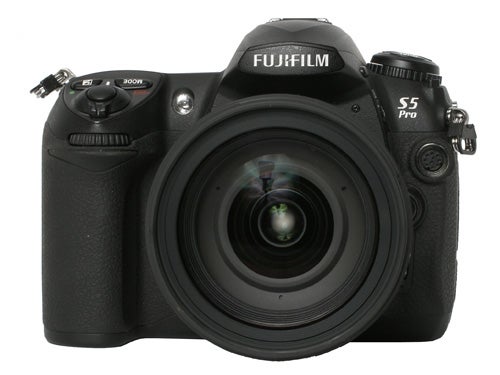
The control layout is identical to the D200, it has the same large back-lit LCD data display on the top panel, and the same two-dial input system. The previous models in Fuji’s DSLR series have been widely praised as outstanding studio cameras, so it’s no surprise that the S5 retains the flash sync terminal and 10-pin remote control connector from the D200. The large and exceptionally bright pentaprism viewfinder with its menu-selectable composition grid is also straight out of the Nikon.
In terms of handling and performance, the S5 is also virtually identical to the D200. Like most DSLRs it starts up almost instantly. The S5 uses the same 11-point AF system as the D200, which is generally regarded as one of the best around. It’s exceptionally quick and very accurate, and operates well in low light and even total darkness thanks to a bright AF assist lamp. Shooting speed in continuous high-speed mode isn’t quite as fast as the D200, but is can still manage three frames a second with an 18-shot buffer. It’s worth noting however that using the extended dynamic range function (see below) will slow it down to about 1.5 frames a second.
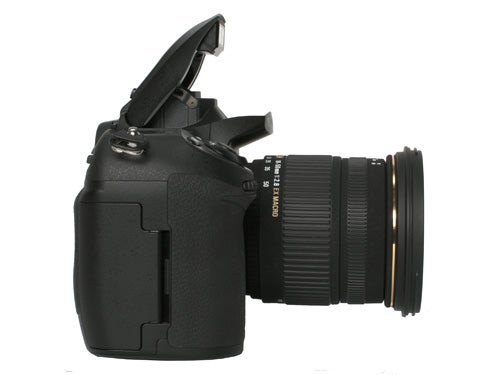
There’s no denying that the S5 is a big heavy camera, but it is comfortable to hold and the controls are as intuitive as professional DSLR controls ever get. The shutter release action is wonderfully smooth, with virtually no vibration, but even so there is the option of a mirror lock-up function to totally eliminate any vibration from the reflex action. The camera’s weight gives it an inherent stability which will also reduce the effects of camera shake at lower shutter speeds.
It’s worth noting that like the D200, the S5 Pro lacks either image stabilisation or a self-cleaning sensor, both features which are available on lower-priced cameras including the Sony A100 and Pentax K10D. In fact my review sample did have some visible dust on the sensor, so this is clearly something that will need to be carefully watched.
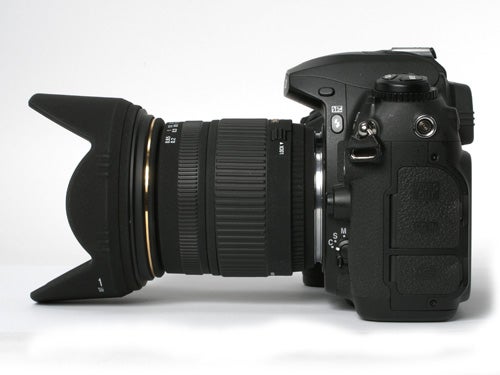
While the body may be 95 percent Nikon, the sensor and image processing are 100 percent Fujifilm. The S5 Pro is equipped with the latest Super CCD SR Pro sensor, purpose built for this camera. It is an APS-C format sensor measuring 23.0mmx 15.5mm, slightly smaller than the DX sensor in the D200. Fuji’s SR sensors are different from conventional CCDs in several important respects. First, the main photocells are arranged not in a chequerboard pattern, but in a diagonal grid. Second, the main photocells are larger than the cells in conventional sensors. Third and most importantly, they have two photocells at each site, the larger ‘S’ cell tuned to capture the main image information, as well as the smaller ‘R’ cell tuned to capture brighter highlights. The theory is that this gives SR sensors greater dynamic range than conventional CCDs, so they can capture a wider range of shadow and highlight detail.
The downside is that the S5 is effectively only a 6.17 megapixel camera, since it has 6.17 million ‘S’ sensors and 6.17 million ‘R’ sensors. This may be a total of over 12 million photocells, but there are only 6.17 million cell sites generating image data. Despite this, the S5 produces final JPEG images that are 4256 x 2848 pixels, or 12.12 megapixels, and RAW files that are 3043 x 2036, or 6.98 megapixels, which will inevitably resurrect the old arguments about Fuji’s image interpolation that have been echoing around the forums and letters pages since the Super CCD was first introduced.
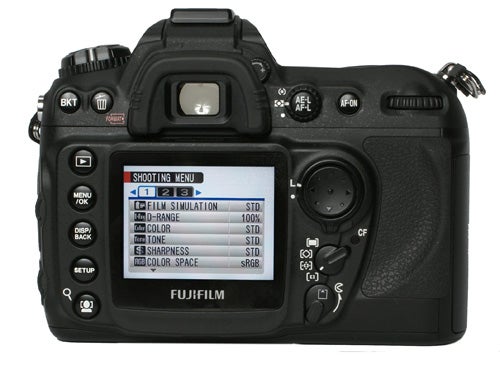
The whole point of the Super CCD SR Pro, in fact of the S5 as a camera, is to attempt to replicate the performance of a 35mm film camera in terms of colour reproduction and tonal range, both qualities for which Fuji’s film products are renowned. The S5 is a professional’s camera designed for studio use and specifically for portrait and wedding photography, and the options available in the menu system reflect this, with multiple settings enabling the user to customise the colour processing, with pre-set simulations of six different film types. There are also adjustments for saturation, colour space, tone and dynamic range, as well as a wide range of white balance settings, including dial-in colour temperature. The range of colour adjustments on offer is significantly wider than the D200, in fact wider than any other DSLR I’ve tested recently. The wider dynamic range ability of the Super CCD SR is implemented in the menu system with a selection of extended dynamic range options offering up to two stops of extra shadow or highlight detail. This may not sound like a lot, but if you’ve ever tried to photograph a bride in a white wedding dress standing next to the groom in a black suit you’ll know that every little helps.
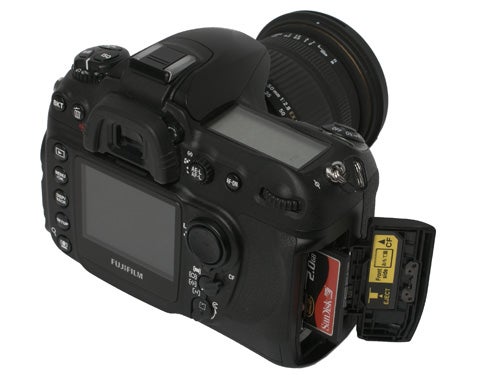
All these in-camera colour adjustments are only relevant when shooting in JPEG mode, however most professional photographers will prefer to shoot in RAW mode, which bypasses all the in-camera processing. The supplied FinePix Viewer software doesn’t provide anything like the same level of flexibility that is available using the camera’s menu, so to get the full range of options for RAW conversion you have to fork out an extra £100 for the optional Hyper-Utility 3.0 software, which in my opinion should have been included with the camera. In fact I’m not at all sure why Fuji bothered to include FinePix viewer at all, since any photographer who is likely to buy the S5 Pro will take one look at its brightly coloured newbie-friendly “Hi! Let’s get started…!” interface and immediately uninstall it in favour of Photoshop.
So does it work? Does the S5 Pro actually produce better colour and tonal range than an equivalent SLR with a conventional CCD? The short answer is yes, but at a price. I found that in exact comparison shots with the Nikon D40x which I still have, and with my own Sony A100, the S5 produced roughly two stops of extra dynamic range, with enhanced shadow detail and highlights. The Sony’s Dynamic Range Optimiser produces about the same performance, but does tend to introduce some image noise into deeper shadow areas. The S5 brings up extra shadow detail with no noise at all, and will show detail in highlights that would be burned out white on other cameras.
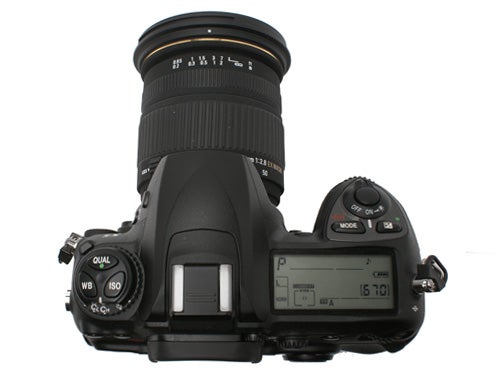
Colour rendition is, in a word, superb. Natural tones such as flowers and skin are reproduced perfectly, and the extra tonal range reduces the banding effect sometimes seen with subtle colour variations.
With all the emphasis on colour and dynamic range another impressive aspect of the S5’s performance has almost been overlooked. Its high-ISO noise reduction is one of the best I’ve seen from any DSLR, producing noise-free images at 1600 ISO and acceptable shots at 3200 ISO.
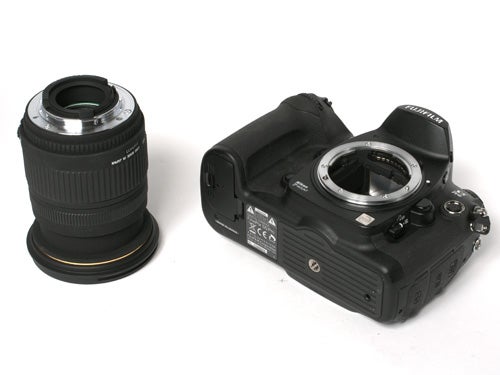
However I said there is a price, and it is the final image detail and sharpness that suffers. There’s no getting away from the fact that the S5 interpolates its 12MP images from a 6MP sensor, and when examined closely the results simply don’t have the same fine detail as a similar shot taken with a 10MP camera, and there are interpolation artefacts visible on some shots. To be fair the S5 isn’t designed for landscape photographers, and in the world of portrait photography the maximum level of detail is not the most important feature. It’s a case of “horses for courses”, and while the S5 is very good at colour and tone, it’s not so good at fine detail. It’s up to you to decide whether its abilities suit your needs.
”’Verdict”’
The Fujifilm S5 Pro continues in its predecessors’ tradition of providing superior dynamic range and tonal quality for specialist portrait and wedding photographers, who will be delighted with its outstanding capabilities in these areas, as well as its superb handling, build quality and performance. It’s not really an ideal camera for the general consumer though, so if you’re looking for a similarly-priced general-purpose DSLR you’d be better off buying the Nikon D200 instead.
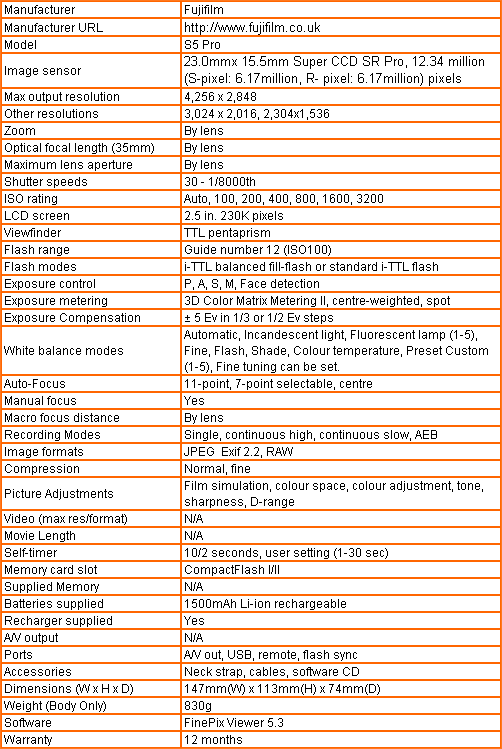
”A range of test shots are shown over the next few pages. Here, the full size image at the minimum ISO setting has been reduced for bandwidth purposes to let you see the full image, and a series of crops taken from original full resolution images at a range of ISO settings have been placed below it in order for you to gain an appreciation of the overall quality.”
—-

—-

The S5 Pro has multiple ISO settings at up to 1/3-EV intervals, but I’ve only included the whole-stop values here to save space. The image is of course clean and noise free at 100 ISO.
—-

No noise at 200 ISO.
—-

Still non noise at 400 ISO
—-

Impressively clean still at 800 ISO
—-

Even at 1600 ISO the image is still noise-free.
—-

Only at 3200 ISO do we see a slight speckling of image noise, but even this image would look good as an A4 print.
—-
”A range of test shots are shown over the next two pages. Here, the full size image has been reduced for bandwidth purposes, and in some case a crop taken from the original full resolution image has been placed below it in order for you to gain an appreciation of the overall quality.”
—-

Here’s my usual DSLR detail test shot of Sidmouth sea front. See below for a full-res crop.
—-

If you compare this shot with some of the 10MP DSLRs that I’ve tested, you’ll see that the S5 Pro doesn’t quite match them for sheer detail, but it’s still far from shabby.
—-
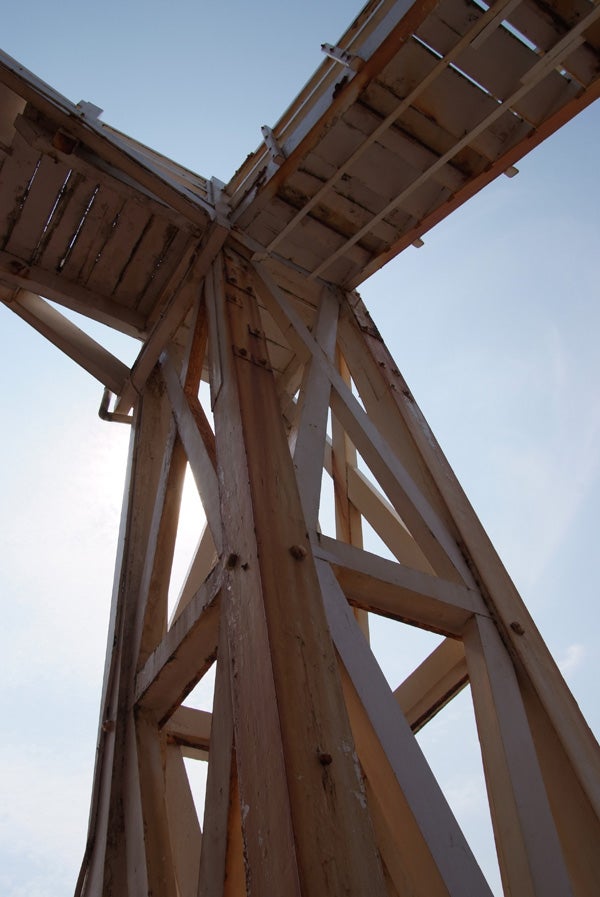
Where the S5 really scores is in its ability to capture a huge range of tones. Even this high-contrast shot straight into the sun is evenly exposed.
—-
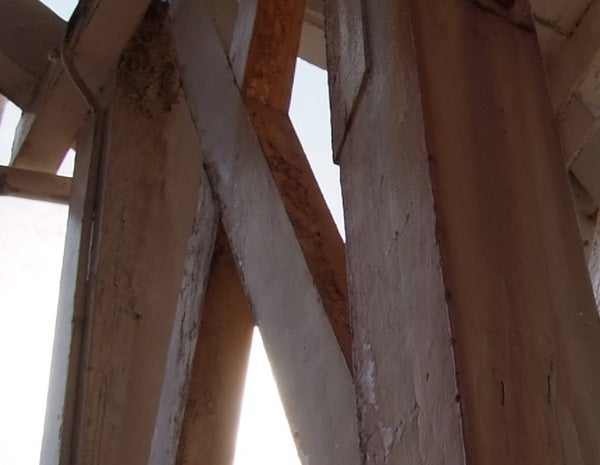
This is a crop from the above image. No sign of any purple fringing here.
—-
”A range of test shots are shown over the next two pages. Here, the full size image has been reduced for bandwidth purposes, and in some case a crop taken from the original full resolution image has been placed below it in order for you to gain an appreciation of the overall quality.”
—-
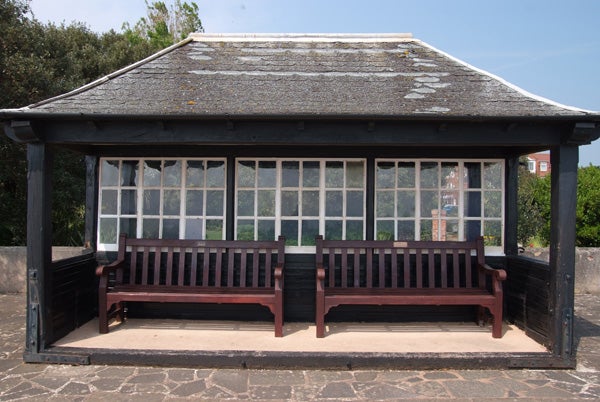
My test camera was supplied with a high-quality Nikon-mount Sigma DC 18-55mm lens, which produces almost no distortion and excellent edge sharpness.
—-
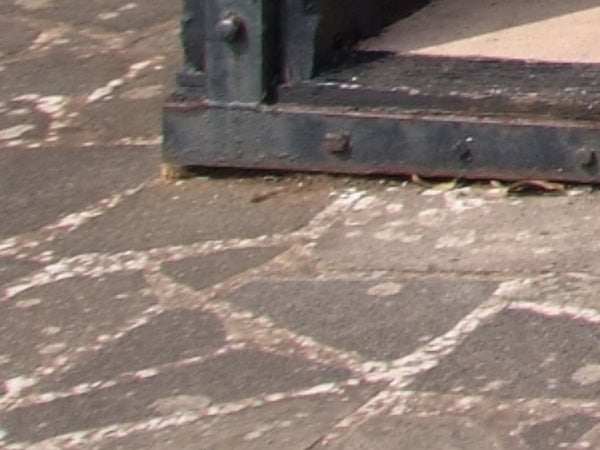
Here’s a corner crop from the above image.
—-

This shot was taken with the default colour values, and shows just how rich and vibrant the colour reproduction of the S5 really is.
—-

This was taken using the high-saturation setting. The difference is subtle, but noticeable if you examine the details closely.
—-
Trusted Score
Score in detail
-
Value 7
-
Image Quality 9
Features
| Camera type | Digital SLR |
| Megapixels (Megapixel) | 12.3 Megapixel |
| Optical Zoom (Times) | By lensx |

